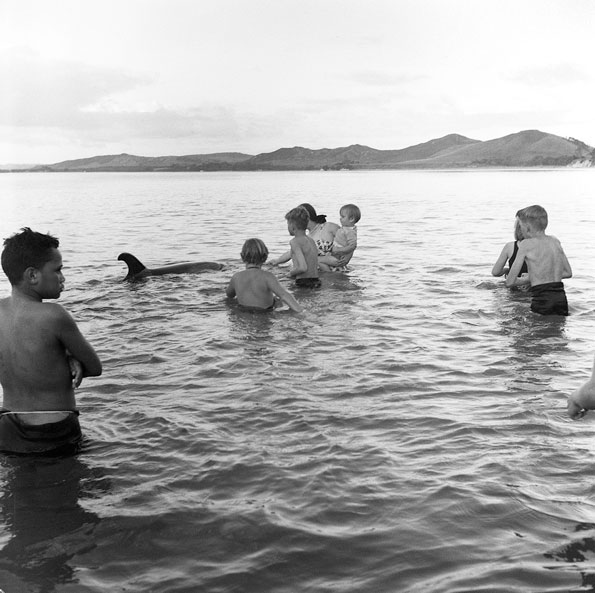 'Crowd in the water, Opononi', 1956
'Crowd in the water, Opononi', 1956
TLF ID R5113
This is a black-and-white photograph showing a woman and a group of children in the water at Opononi, Hokianga Harbour on the west coast of the far north of New Zealand's North Island. The woman appears to be reaching out her arm near the head of a young bottlenose dolphin known locally as Opo. The dorsal fin and part of the body of the dolphin are visible in the water. The low hills of the Hokianga Harbour can be seen in the background. The photograph was taken in 1956 by Eric Lee-Johnson, and its negative measures 6 cm x 6 cm.
